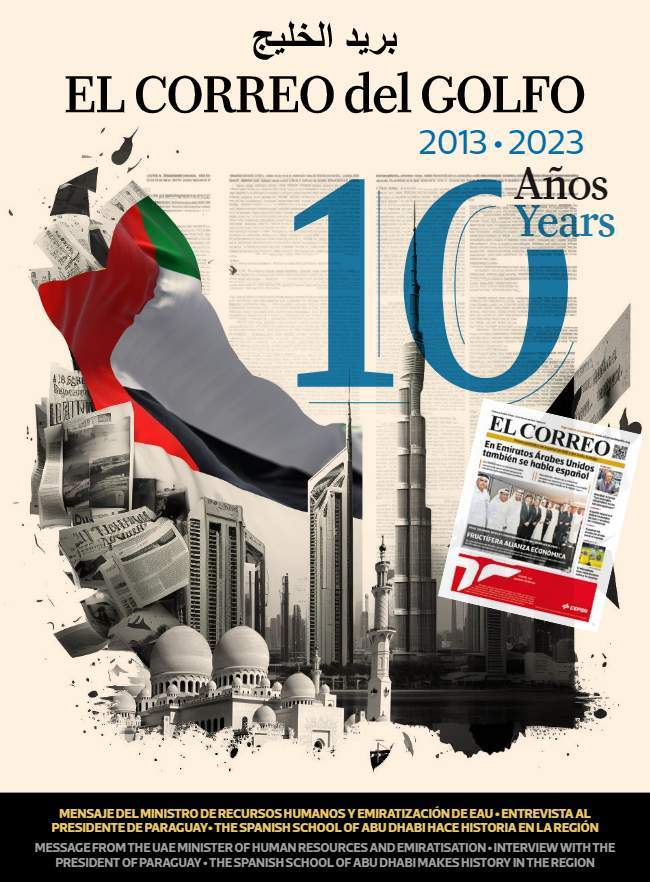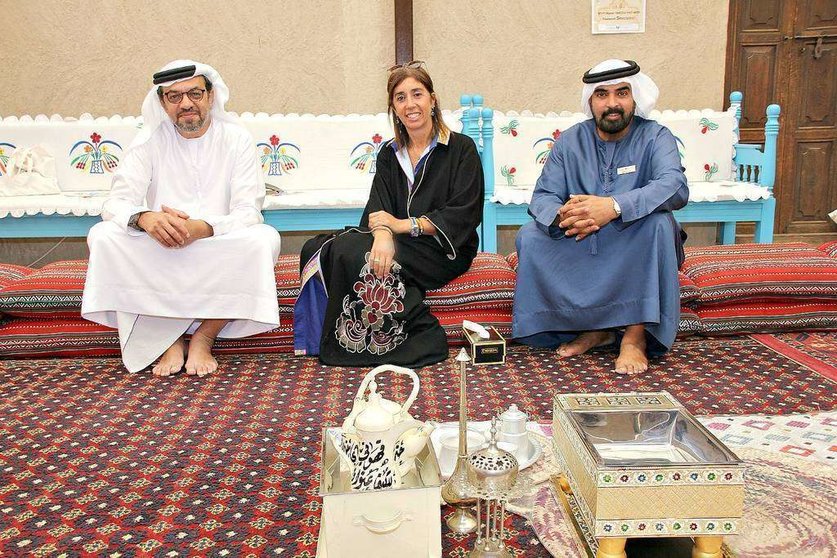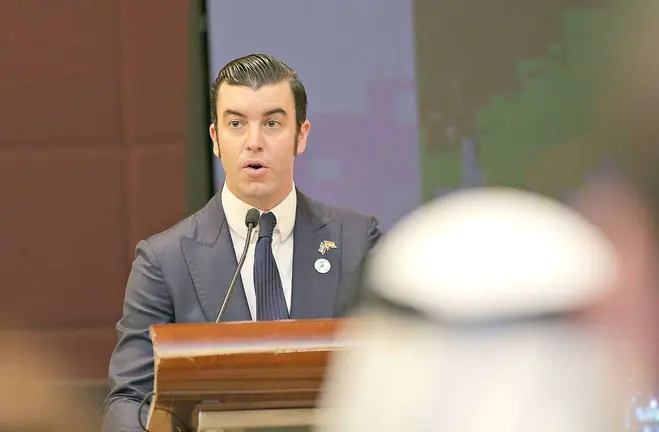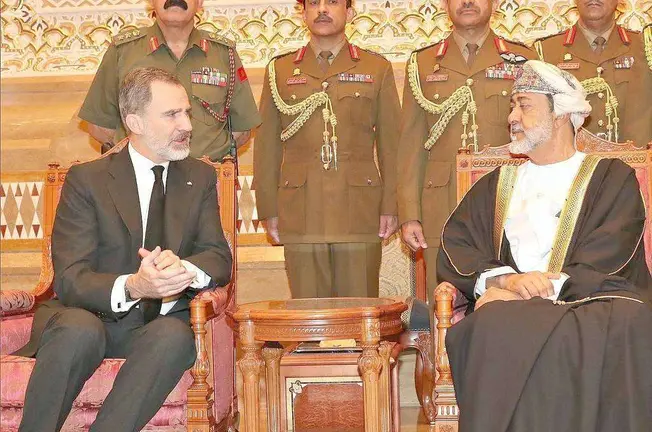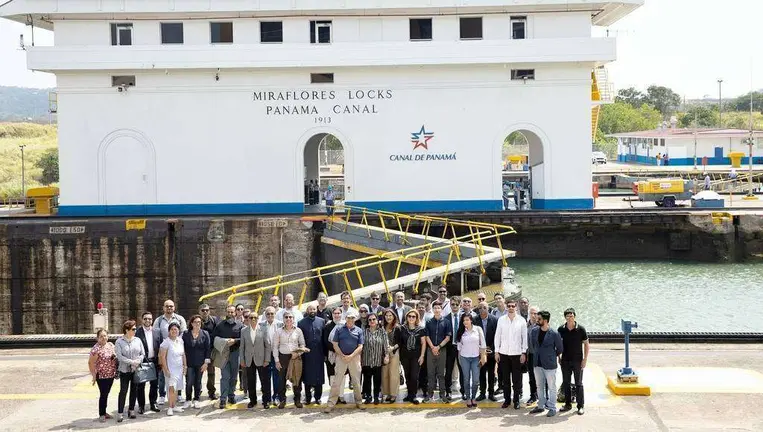María Tello nos espera en Al Fahidi, el antiguo Al Bastakiya de Dubai, en una casa profundamente árabe, sentada en un acogedor patio de la Fundación Cultural Alserkal. Tradición y cultura emanan de cada uno de sus rincones. Mi compañero Navid Ali, y yo llegamos a través de las callejuelas que hoy conforman Al Seef, una zona de la ciudad que recrea las viviendas y el urbanismo del Dubai más costumbrista. Retrocedemos en el tiempo. Caminar por su entramado es adentrarse en un barrio situado en la orilla del Creek que es desconocido para muchos y que descubre un lugar muy distinto de la urbe que se levanta alrededor del Burj Khalifa, el rascacielos que con 828 metros es el edificio más alto del mundo.
“Aquí es posible descubrir el verdadero Dubai, la esencia de la ciudad, que por desgracia pasa desapercibida para la inmensa mayoría de quienes la visitan”. La española María Tello es una conocida residente de la ciudad. Lleva años recorriendo cada uno de sus vericuetos, participando y organizando actividades siempre vinculadas con la cultura y la tradición emiratí. Y además es una gran profesional del turismo. Hoy, a través de Passion Dubai Tours, la ‘boutique turística’ que dirige, ofrece a quienes viajan hasta este sorprendente país, Emiratos Árabes Unidos, un universo que dista mucho de los habituales recorridos por el Burj Khalifa, Madinat Jumeirah, Burj Al Arab, Dubai Marina o los ‘tops’ que han hecho de este enclave a orillas del Golfo Arábigo uno de los puntos más conocidos del planeta.
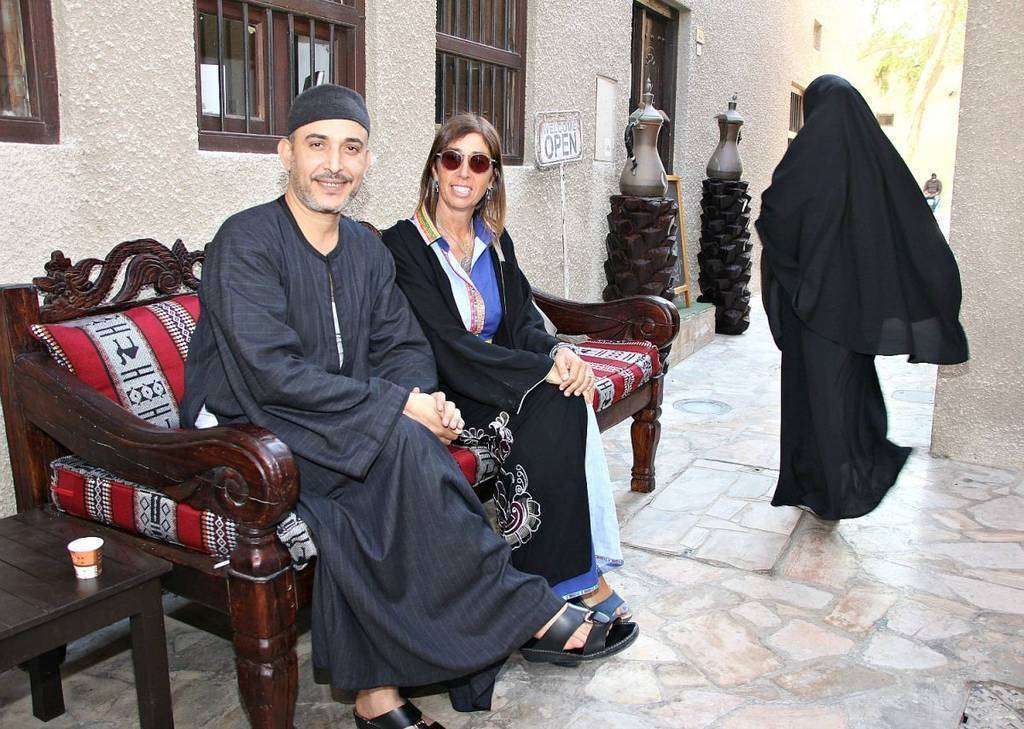
“Evidentemente cuando muestro Dubai, Abu Dhabi, Sharjah o cualquier otro emirato del país, visitamos también los lugares conocidos, el Dubai de los grandes rascacielos y el de los edificios emblemáticos que hoy son seña internacional de la ciudad, pero mi enfoque como ‘boutique turística’ es ir al detalle, a aquello que hace genuinas a las ciudades de Emiratos Árabes y que interesa a quienes quieren encontrarse con el espíritu de una tierra milenaria que va más allá de los grandes nombres que todos conocen en el mundo; profundizar en ese conocimiento, en la cultura, en la tradición, en la religión, en la forma de vida, en la gastronomía emiratí y árabe es el valor añadido que aporto”.
Pasear con María por Al Fahidi es hacer un puerta a puerta, caminar hacia esa esencia que tan bien describe y que sorprende a cada paso. En una pequeña callejuela se detiene en un umbral que nos abre paso al estudio del caligrafista árabe Abdulfattah Mohamed Al Saeed, que recibe a María con una amplia sonrisa mientras está empleado a fondo en un exquisito trabajo para Sarah, una joven saudí a quien brillan sus ojos bajo el velo tradicional de Arabia. Abdulfattah es una institución en Dubai. Llegó desde Egipto hace más de 40 años y ha ejercido su profesión en diversas instituciones de Emiratos Árabes. Incluso fue el diseñador de las primeras señales de tráfico que se instalaron en la ciudad.
“En Al Fahidi es posible descubrir el verdadero Dubai, la esencia de la ciudad, que por desgracia pasa desapercibida para la inmensa mayoría de quienes la visitan o incluso de los que viven en la misma ciudad”
María no tarda en establecer una animada y alegre conversación con Abdulfattah y Sarah. Hablan del día a día, de lo que viene y de lo que va, de lo que conversan los verdaderos habitantes de esta ciudad y que se encuentran y saludan en las esquinas. Y eso es lo que hace tan especiales y genuinas las propuestas que ofrece en su ‘boutique turística’ y define a la perfección la pasión que siente por Dubai.
Algunos pensarían, inducidos por la imagen que en muchas ocasiones llega a Occidente desde estas tierras, que Sarah, vestida con su abaya, podría ser reacia a realizarse una foto. Pero no. Todo lo contrario. Se muestra entusiasmada. Es otra de las cuestiones que María descubre a quienes la acompañan: la verdadera personalidad de los árabes. Hasta el punto de que incluso los lleva a visitar una mezquita que irradia autenticidad en las orillas del Creek. El templo tiene sus puertas de par en par para todos. Allí conocen los aspectos de la religión musulmana, una forma de entender la vida marcada por una fe cada vez más abierta. En las mezquitas hay luz y color, amabilidad, educación y mucho respeto por las culturas ajenas. Además de mucho arte.
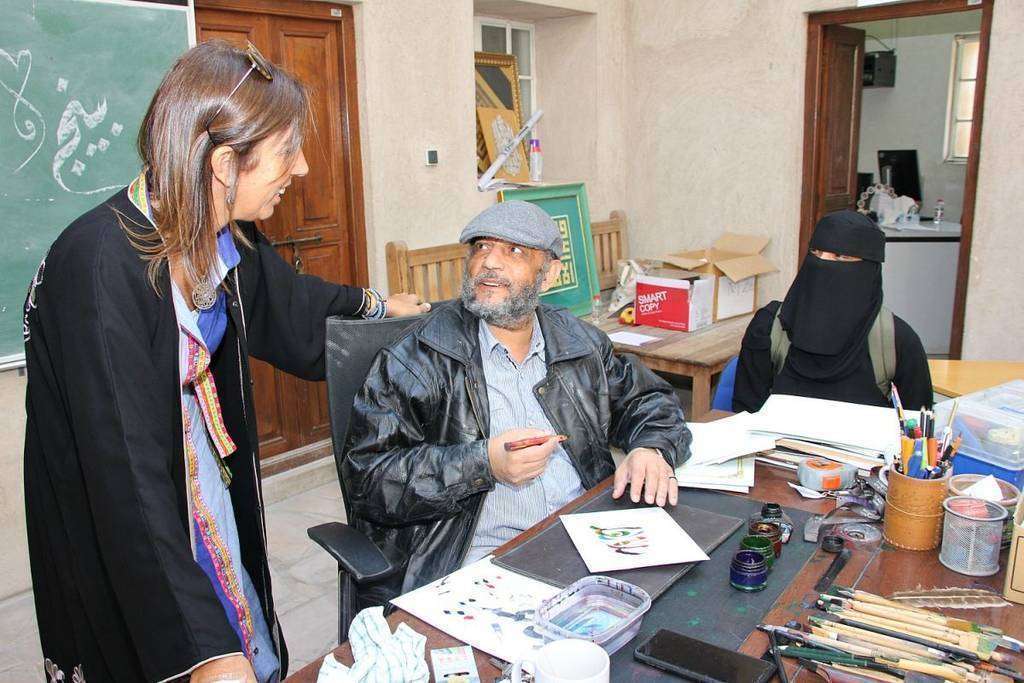
La siguiente puerta a la que llama María en ese revelador recorrido por Al Fahidi es la del Centro Cultural para el Entendimiento. Su lema lo dice todo: puertas abiertas, mentes abiertas. Allí aguardan, encantados, Rashid Al Tamimi y Ahmed Al Jaffla. Están sentados sobre espectaculares alfombras en el interior de un patio dibujado alrededor de un precioso claustro. Ofrecen café, servido de forma tradicional. También dátiles. El humeante líquido abrasa. La amena charla que se inicia pasa por España, y más concretamente por Córdoba, una ciudad que para los árabes es referencia permanente. En el centro de la gran alfombra unas primorosas fuentes ofrecen verduras, arroz, pescado, cordero… “Hay quienes piensan que en Emiratos Árabes no tenemos gastronomía autóctona, pero nada más alejado de la realidad: tenemos mucha, exquisita y variada”, aseguran los anfitriones.
Además explican cómo visten los árabes en esta tierra. Y también por qué. Queda claro. María les dirige una pregunta: “¿qué les sorprende más a los visitantes, el Burj Khalifa con sus 828 metros o lo que, quienes se adentran en estas calles, encuentran en Al Fahidi?”. La respuesta al unísono de Rashid y Ahmed no se hace esperar: Al Fahidi. Todo está casi dicho.
“Evidentemente visitamos los lugares conocidos, el Dubai de grandes rascacielos y edificios emblemáticos, pero mi enfoque como ‘boutique turística’ es ir al detalle, a aquello que hace genuinas a las ciudades de Emiratos Árabes”
A continuación, la parada es en un lugar recóndito. La pequeña oficina de un emiratí de toda la vida habitante de Al Bastakiya. Abdullah Al Nazari irradia amabilidad. Este reducido espacio, plagado de viejas fotos de jeques y de recuerdos, no es un lugar para turistas, pero María es recibida con entusiasmo. Abdullah cuenta sus orígenes, entre los que incluye que es vecino del jeque Mohamed bin Rashid Al Maktoum, gobernante de Dubai y primer ministro de Emiratos Árabes. Siempre ha sido vecino del jeque. Al final de este encuentro saca su teléfono móvil y realiza un vídeo en el que, hablando a mil por hora, da cuenta a sus 11.500 seguidores de Instagram de la visita. Un ‘influencer’ que guarda numerosos secretos de Dubai.
El recorrido de la ‘boutique turística’ de María Tello prosigue por cafés y galerías de arte, una de ellas localizada en la Fundación Alserkal, donde tenemos tiempo de compartir un té con Afia Kham, miembro de esta fundación. Y también pasa por pequeños hoteles hasta finalizar en el Creek, repleto de abras, dhows y viejas embarcaciones que a diario cruzan el estrecho de Ormuz cargadas de mercancías rumbo al puerto de Bandar Abbas en Irán.
Tomando el transporte público en uno de los abras cruzas, como cualquier residente de Dubai, a la otra orilla del Creek y te adentras directamente en los zocos de las especias y del oro o el Museo de las Perlas.
“Puedes haber venido a Dubai varias veces, o incluso vivir en la misma ciudad desde hace años, y, por increíble que parezca, no conocer nada de esto; y es una pena porque para impregnarte de lo que es, de verdad, Emiratos Árabes hay que visitar estas calles, estas casas y a estas gentes”, subraya María.
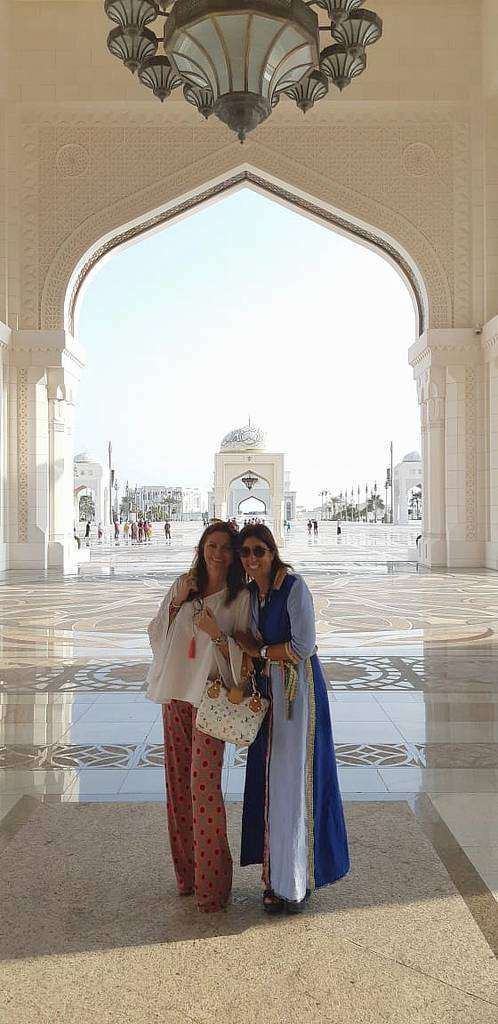
ABU DHABI, LA CAPITAL Y MUCHO MÁS
En Abu Dhabi, la capital de Emiratos Árabes, una visita obligada en el recorrido de María Tello es la Gran Mezquita Zayed, un lugar que, por más que sea muy conocido, impresiona a cada uno de sus visitantes. Su blancura, sus alminares y cúpulas y su espectacular patio impactan y nos guían deslumbrados hasta el interior de la nave, donde sorprende la grandiosidad de su alfombra, las gigantescas y coloridas lámparas o el fino labrado de los mármoles de sus mil columnas y arcos. Incluso quienes son profundos conocedores de los tesoros que alberga la Mezquita de Córdoba quedan con la boca abierta. Es hoy el gran templo del mundo musulmán.
A ello se une un gran paseo por la Corniche que nos lleva hasta el hotel Emirates Palace, ejemplo del lujo árabe en su máxima expresión, o el Palacio Presidencial Qasr Al Watan, que se encuentra situado justo al lado, y que se ha erigido en el nuevo símbolo de la ciudad.
En el Heritage Village se pueden apreciar los aspectos tradicionales de la forma de vida en el desierto y llevar a cabo una inmersión total mientras los artesanos comparten experiencias y demuestran habilidades tradicionales como el trabajo en metal, la cerámica, el tejido o el hilado. A lo que se suman puestos cargados de encanto poblados de productos autóctonos como jabones hechos a mano o gran variedad de hierbas secas.
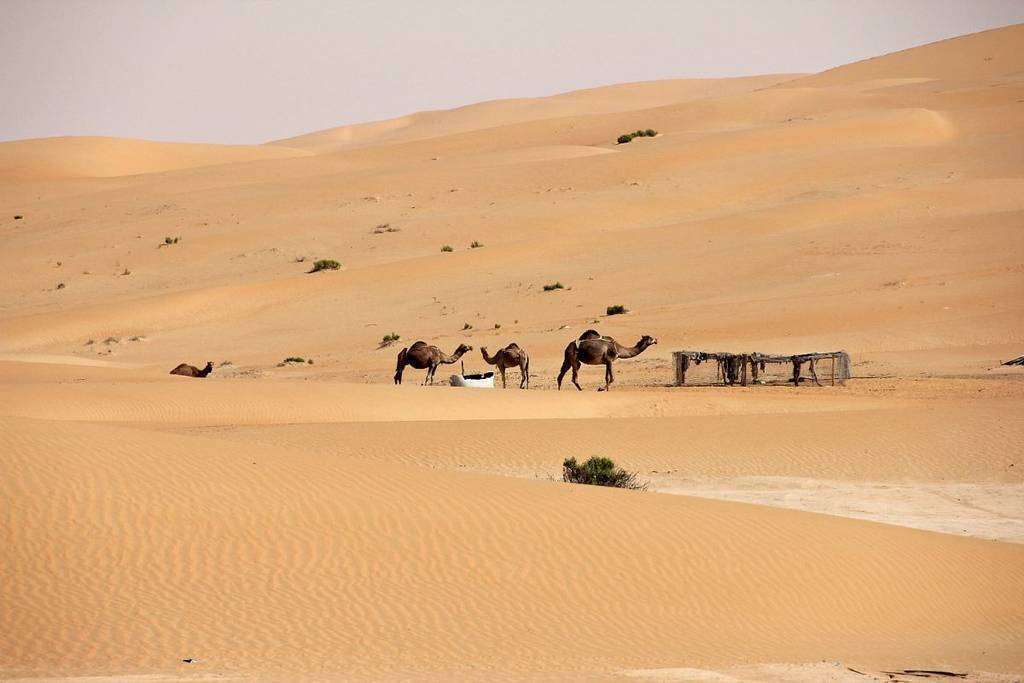
DESIERTO E HISTORIA MILENARIA
“Venir a Emiratos Árabes también significa descubrir el desierto; lo que pretendo de quienes disfrutan de Passion Dubai Tours es que no hagan solo las típicas excursiones y safaris; mi objetivo es aportar valor añadido también a estas propuestas, darles contenido real y valioso”, señala María Tello.
Por ello, cuando María habla del desierto lo hace con conocimiento y sabiendo hacia donde debe dirigir sus pasos y de quienes la acompañan. Y en este sentido tiene claro que hay que ir al desierto del emirato de Sharjah, situado en el interior del país al norte de Dubai. Allí se encuentran impresionantes dunas sobre las que derrapar con potentes todoterrenos, arenas sobre las que caminar y contemplar espectaculares puestas de sol, pero también está la zona arqueológica de Maleha, un lugar donde se respira larga historia por los cuatro puntos cardinales.
Justo en el área de Al Madam, ya cerca de Omán, resguardada por las montañas Jebel Buhais y Jebel Fayah, se halla una excavación de arqueólogos españoles que ha logrado desenterrar parte de la historia y el modo de vida de un poblado de la Edad de Hierro.
La zona está presidida por el Centro Arqueológico de Maleha, un moderno museo que proporciona una visión sin igual sobre las primeras actividades del hombre en la región, que se remontan 130.000 años atrás. El lugar ofrece una experiencia única de aprendizaje que lleva a los visitantes a través de los milenios para revelar las primeras huellas de la humanidad.
“Esto también es Emiratos Árabes y hay que descubrirlo; una aventura rápida en todoterreno por las dunas o una cena en el desierto a la luz de las estrellas están bien, muy bien, pero existen además otras opciones para bucear en las arenas y encontrar el pasado más remoto de este pueblo”, afirma.
María va aún más allá. A quienes estén dispuestos, les invita incluso a superar el desierto que todos tenemos en el imaginario o el de las películas. La propuesta es sumergirse en una aventura rumbo a la duna Tal Moreeb, situada en el desierto de Liwa al sur de Abu Dhabi, justo en la frontera con Arabia Saudita. Tiene 300 metros de altura -es una de las más elevadas del planeta-, 1.600 metros de largo y una caída de 50 grados.
Cuenta María que, en ocasiones, por el camino paran en granjas, alejadas a cientos de kilómetros del bullicio, donde se puede asistir al espectáculo de ver una camella amamantando a sus crías. Incluso acampan en algún punto que les resulte especial. La ruta hacia Tel Moreeb, ya sobre pleno desierto, discurre 30 kilómetros por una pequeña carretera, asfaltada y en buen estado, que sube y baja dunas en todo su recorrido. La experiencia es impresionante.
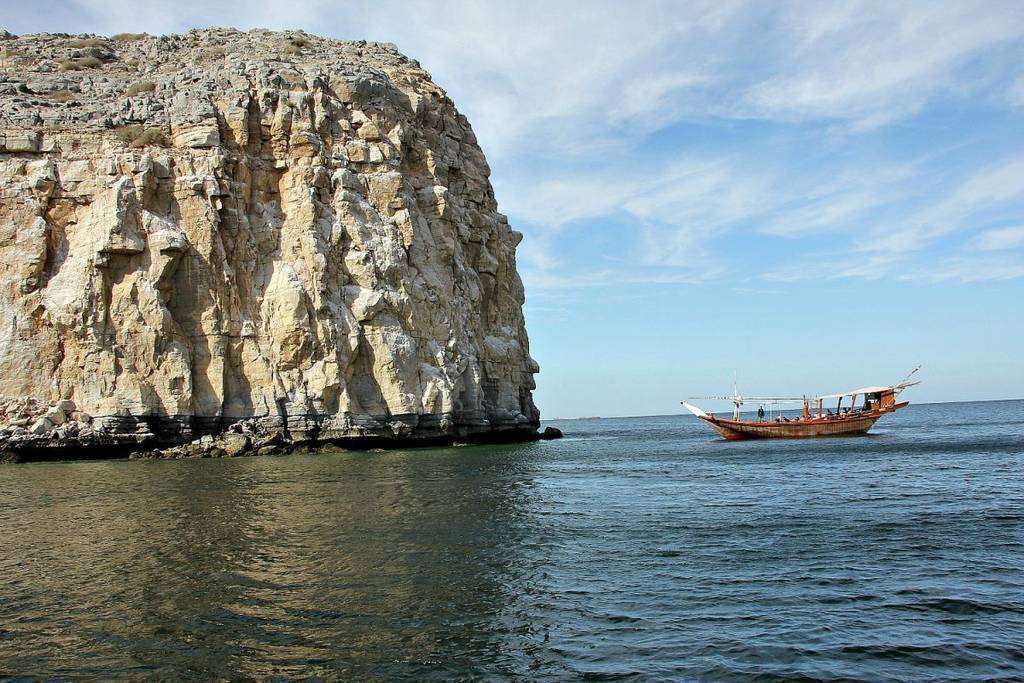
FIORDOS EN EL ESTRECHO DE ORMUZ
María nos pregunta: “¿hay algún punto del mundo que genere más interés que el Estrecho de Ormuz?”. Y, la verdad, es que tenemos que contestar que no. Situado entre la República Islámica de Irán y el Sultanato de Omán, es lugar constante de la atención internacional. Puerta de entrada y salida del Golfo Arábigo, por sus aguas pasan a diario decenas de petroleros y mercantes. En la orilla omaní se encuentra la península de Musandam, que se localiza al norte de Emiratos Árabes, a pocas horas de distancia en coche de Dubai y muy cerca de Ras Al Khaimah.
Al cruzar la frontera entre Emiratos Árabes y Omán, el desierto da paso a un paisaje marino, con calas y playas rodeadas de ensenadas rocosas elevadas sobre el nivel del mar. A cada paso surgen pequeños puertos pesqueros tradicionales con barcos que descansan de la jornada marinera. El punto de destino es uno de esos puertos en el pueblo de Khasab, muy alejado de las rutas turísticas habituales. Es aquí donde María y sus acompañantes aguardan para embarcar en un dhow, donde, tumbados sobre las alfombras que cubren su cubierta, navegan entre fiordos que se elevan hasta el cielo. Siempre se avistan grupos de delfines que saltan junto al barco. Literalmente se pueden tocar con la mano.
El dhow fondea en aguas cristalinas. Es el momento de zambullirse para nadar entre cientos de peces de todos los colores y tamaños que recorren fondos transparentes repletos de coral. Y si se está dispuesto a completar la aventura, hay opción de alcanzar a nado la Isla del Telégrafo, una roca de 160 metros de largo y hasta 90 metros de ancho de poco más de una hectárea que flota entre acantilados. El nombre de Telégrafo le viene de la estación repetidora de cable telegráfico construida en la isla en 1864.
“Historia, naturaleza, cultura, tradición, gastronomía y, sobre todo, aventura real que te lleva a conocer una tierra y a sus gentes”, la pasión de María.
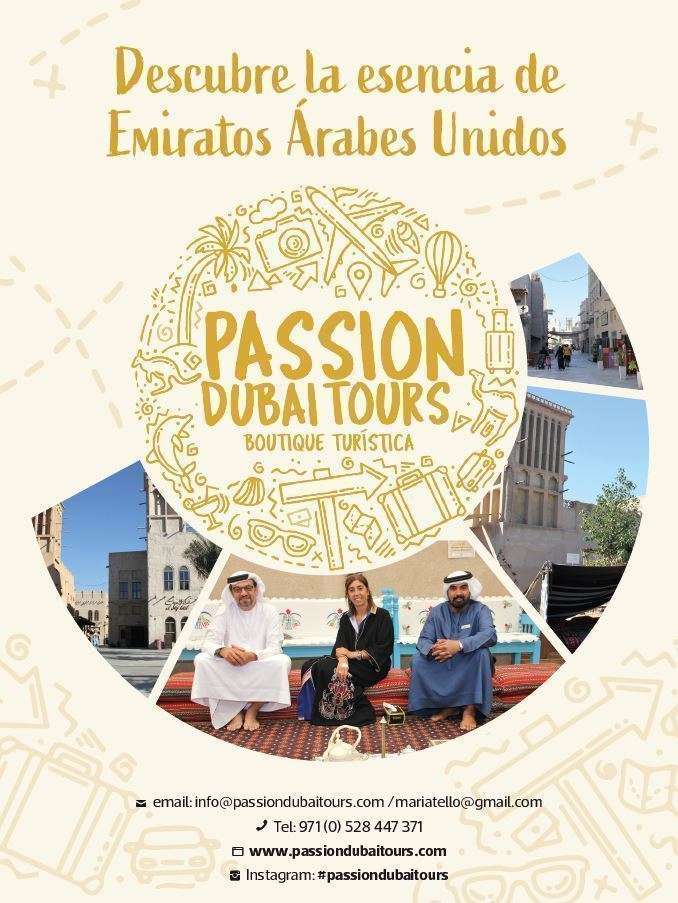
Rutas turísticas de calidad y a la carta
Passion Dubai Tours, la ‘boutique turística’ de María Tello, cuenta con un equipo en continuo crecimiento y busca siempre la colaboración de guías turísticos especializados y de personas que ofrecen a los visitantes el sello de calidad de su propia experiencia en Emiratos Árabes. Es el caso de María Camacho, ‘community manager’ de Passion Dubai Tours y residente veterana, que pone a disposición de sus clientes vivencias de más de una década como protagonista de la evolución y el crecimiento dubaití.
Passion Dubai Tours ofrece rutas a la carta en Emiratos Árabes Unidos que pueden ser diseñadas para una persona o grupos de 30 o más personas. María Tello, la impulsora de esta especialísima iniciativa, es de Bilbao y reside en Dubai desde 2013. Es licenciada en Derecho por la Universidad de Deusto y diplomada en Turismo por la Universidad Católica de Ávila. También cuenta con un máster en Ciencias del Turismo en la Escuela de Ciencias Turísticas de Roma. Y lo principal es que tiene un gran conocimiento de Emiratos Árabes que le viene dado por los muchos años que lleva viviendo en el país. Atesora cada uno de los secretos de esta tierra.
Las rutas las lleva a cabo en español, italiano e inglés. Y todos son bien recibidos. Fundamentalmente en un año muy importante en el que Dubai acogerá la Exposición Universal 2020 y en el que la ciudad va a recibir a millones de visitantes. Numerosas delegaciones de incontables países del mundo hispanoparlante acudirán a Emiratos Árabes y tendrán la oportunidad de conocer una tierra que tiene mucho por mostrar y descubrir. Sobre todo si hacen la elección adecuada.
“Lo que propongo es que, además de Expo Dubai 2020, que resulta obligado visitar, opten por adentrarse en un país con una historia, con una cultura, con unas tradiciones y con una naturaleza impresionantes y que en numerosas ocasiones son desconocidas hasta por quienes aquí viven”.
----------------
Información y contacto: info@passiondubaitours.com, mariotello@gmail.com, teléfono 971 (0) 528 447 371. www.passiondubaitours.com
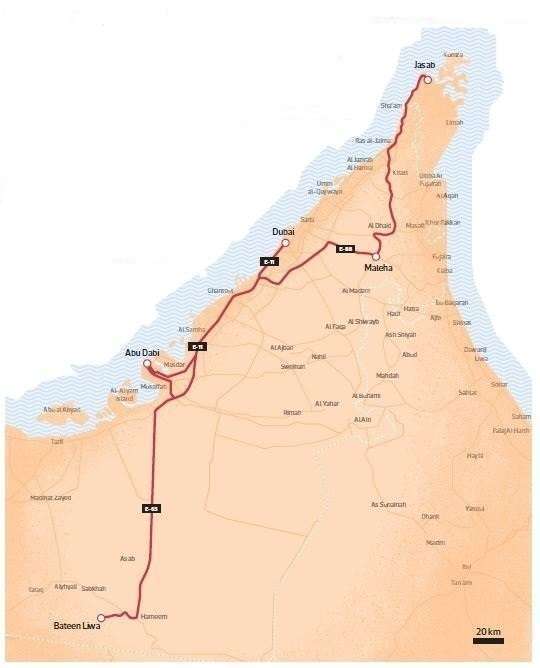
Discover the Real Treasures of Dubai and the Arab Emirates
With Passion Dubai Tours, Maria Tello takes us through Arabian streets and hidden places to unveil the history and traditions of a country known worldwide but which almost everything is really unknown
Rafael Unquiles / Dubai
Maria Tello is waiting for us at Al Fahidi, the former Al Bastakiya of Dubai, in an authentic Arabian house, sitting in a cozy courtyard of the Alserkal Cultural Foundation. Tradition and culture emanate from every corner of it. My colleague, Navid Ali, and I arrived through the narrow streets that today make up Al Seef, an area of the city that recreates the housing and urbanism of traditional Dubai. We go back in time. As we walk through the area, we enter a neighborhood located on the banks of the Creek river that is unknown to many and reveals a very different place from the city that stands around the Burj Khalifa, the 828-meter skyscraper that is the tallest building in the world.
“Here it is possible to discover the real Dubai, the essence of the city, which unfortunately goes unnoticed by the vast majority of visitors.” The Spaniard Maria Tello is a well-known resident of the city. For years she has been travelling through each of its twists and turns, participating in and organizing activities always related to the culture and tradition of the Emirates. She is also an accomplished professional in tourism. Today, Passion Dubai Tours, the ‘tourist boutique’ that she runs, offers travelers to this amazing country, the United Arab Emirates, an experience that is lightyears away from the usual tours of Burj Khalifa, Madinat Jumeirah, Burj Al Arab, Dubai Marina or the so called ‘tops’ that have made this enclave on the shores of the Arabian Gulf one of the best known points of the planet.
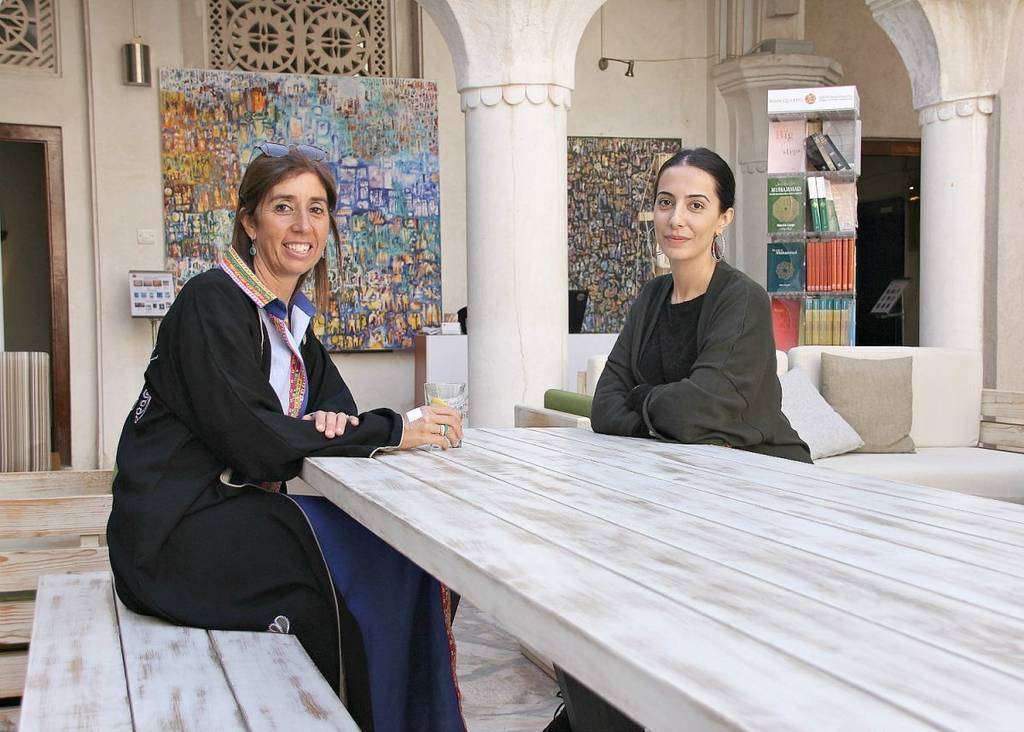
“Of course, when I show Dubai, Abu Dhabi, Sharjah or any other Emirate of the country, we also visit the well-known places, the Dubai of the great skyscrapers, and the emblematic buildings that today are the international sign of the city. Nevertheless, my approach as a ‘tourist boutique’ is to get to the detail, to what makes the cities of the Arab Emirates genuine, and that is of interest to those who want to encounter the spirit of a land that goes beyond the iconic names that everyone knows. Deepening this Emirati and Arab knowledge, of culture, tradition, religion, way of life, and gastronomy is the value I add.”
Wandering with Maria through Al Fahidi is like going door to door, walking towards that essence that she describes so well and that surprises at every step. She stops at a doorway in a small street that leads us to the study of Arab calligrapher Abdulfattah Mohamed Al Saeed, who welcomes Maria with a wide smile whilst working hard on an exquisite work for Sarah, a young Saudi Arabian girl whose eyes shine under the traditional Arabian veil. Abdulfattah is an institution in Dubai. He arrived from Egypt more than 40 years ago and has practiced his profession in various institutions in the United Arab Emirates. He was even the designer of the first road signs installed in the city.
"In Al Fahidi it is possible to discover the real Dubai, the essence of the city, which unfortunately goes unnoticed by the vast majority of visitors or even those who live in the same city"
Maria soon establishes a lively and cheerful conversation with Abdulfattah and Sarah. They talk about their everyday lives, everyday comings and goings, what the real inhabitants of this city talk about, and who meet and greet at the corners. It is this that makes the tours offered by their ‘tourist boutique’ so special and genuine and perfectly defines the passion they feel for Dubai.
Some would think, induced by the impression that the West has of these lands, that Sarah, dressed in her abaya, may be reluctant to have her picture taken. But no, it is quite the opposite. She is enthusiastic. This is another facet that Maria reveals to those who accompany her: the true personality of the Arabs. She does so comprehensively that she even takes them to visit a mosque that radiates authenticity on the banks of the Creek. The temple has its doors wide open to everyone. There they learn about the aspects of the Muslim religion, a way of understanding life marked by an increasingly open religion. In the mosques there is light and color, kindness, education, and much respect for other cultures, in addition to a lot of art.
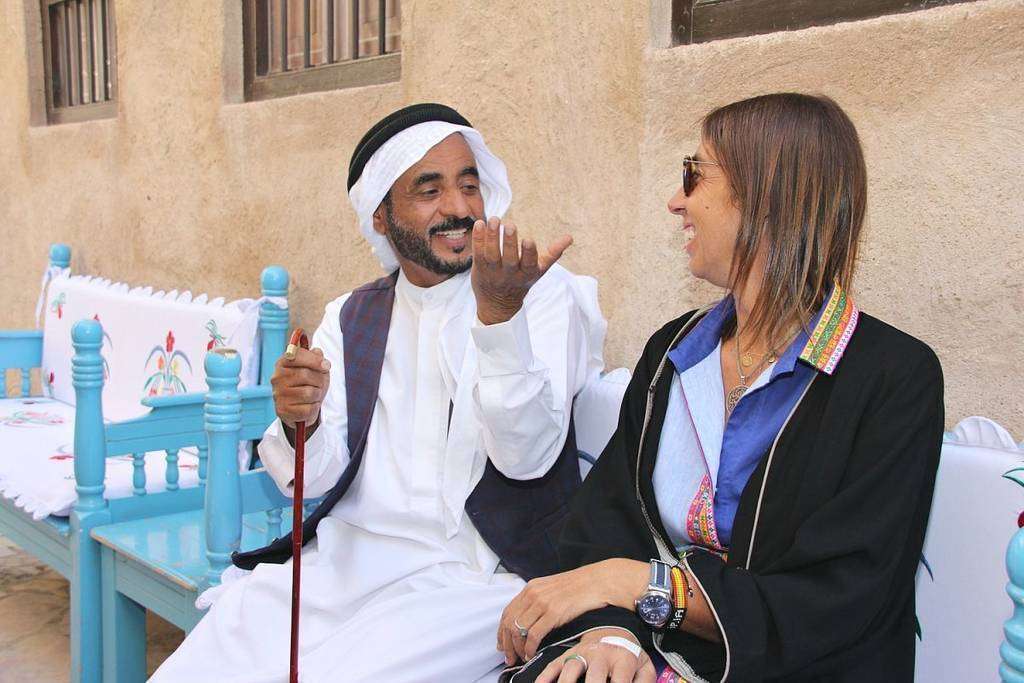
The next door that Maria knocks in this revealing tour in Al Fahidi, is that of the Sheikh Mohammed Cultural Center for Understanding. Its slogan says it all: open doors, open minds. There, Rashid Al Tamimi and Ahmed Al Jaffla wait, delighted. They are sitting on spectacular carpets inside a courtyard drawn around a beautiful cloister. They offer coffee, served in the traditional way, as well as dates. The steaming liquid burns. The pleasant chatter that begins passes through Spain, and more specifically through Cordoba, a city that is a permanent reference point to Arabs. In the center of the large carpet, some exquisite, decorative platters offer vegetables, rice, fish, lamb... “There are those who think that we do not have indigenous gastronomy in the Arab Emirates, but nothing could be further from the truth: we have a lot of exquisite and varied dishes”, the hosts assure us.
Furthermore, they explain how Arabs dress in this land as well as why. Maria asks them a question: “What surprises the visitors more, the Burj Khalifa with its 828 meters or what those who enter these streets, find in Al Fahidi? The answer, given in unison by Rashid and Ahmed doesn’t take long: Al Fahidi. That says almost everything.
"Of course we visit the well-known places, the Dubai of big skyscrapers and emblematic buildings, but my approach as a 'tourist boutique' is to go into the detail, to what makes the cities of the Arab Emirates genuine”
The next stop is a remote location: the small office of a lifelong Emirati inhabitant of Al Bastakiya. Abdullah Al Nazari radiates kindness. This small space, full of old pictures of sheikhs and souvenirs, is not a place for tourists, but Maria is received with enthusiasm. Abdullah gives an account of his origins, including that he is a neighbor of Sheikh Mohamed bin Rashid Al Maktoum, ruler of Dubai and Prime Minister of the Arab Emirates. He always has been. At the end of the meeting he takes out his mobile phone and records a video in which, speaking at a speed of a thousand miles per hour, he lets his 11,500 Instagram fans know about the visit. He is an ‘influencer’ who holds many secrets of Dubai.
Maria Tello’s ‘tourist boutique’ exploration continues through cafes and art galleries, one of them located at the Alserkal Foundation, where we have time to share a cup of tea with Afia Kham, who works for the cultural center. We also visit small hotels until we reach the Creek, which is full of coves, dhows, and old boats that cross the Strait of Ormuz every day loaded with goods on their way to the port of Bandar Abbas in Iran.
Taking public transport at one of the coves, visitors can cross, like any Dubai resident, to the other side of the Creek and go directly into the spice and gold souks, or the Pearl Museum.
“People could have visited Dubai several times, or even lived in the same city for years, and, as incredible as it may seem, they may not know anything about it. This is a shame because, in order to be enlightened to what the Arab Emirates really are, people have to visit these streets, these houses and these people,” Maria stressed.
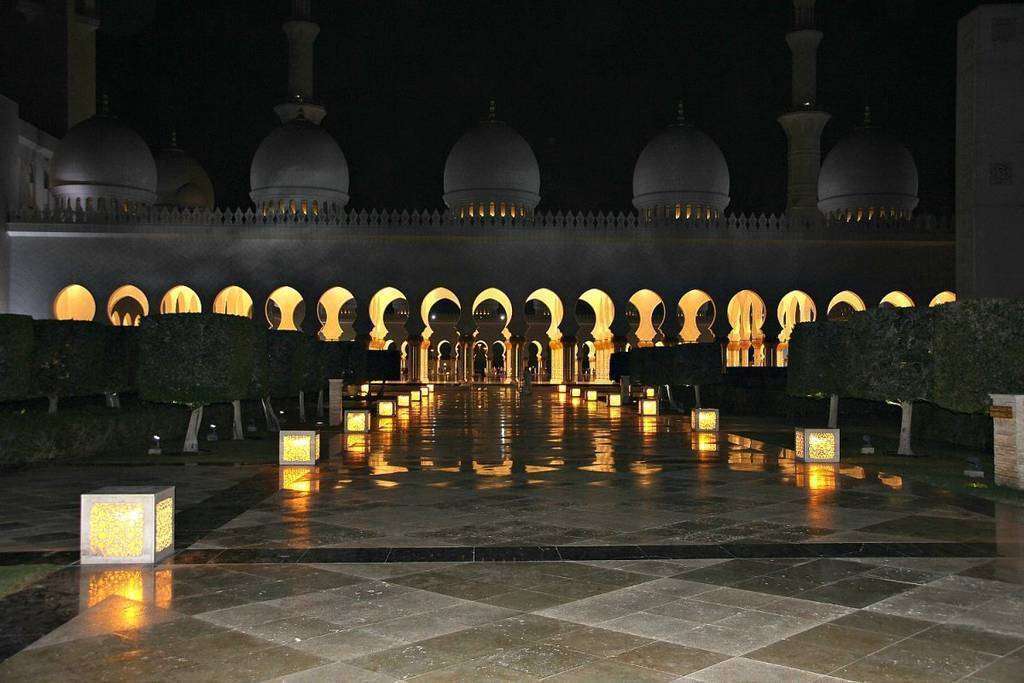
ABU DHABI, THE CAPITAL AND MUCH MORE
In Abu Dhabi, the capital of the United Arab Emirates, a must-see on Maria Tello’s tour is the Grand Zayed Mosque, a place that, although well known, impresses every visitor. Its whiteness, minarets and domes, as well as its spectacular courtyard make an impact. We are guided, dazzled, to the interior of the structure, where we are surprised by the grandeur of its carpet, the gigantic and colorful lamps and the fine carving of the marbles of its thousand columns and arches. Even those who are deeply knowledgeable about the treasures housed in the Mosque of Cordoba are left with their mouths open. Today it is the great temple of the Muslim world.
To this we can add an impressive walk along the Corniche that takes us to the Emirates Palace Hotel, an example of the very peak of Arab luxury, or the Presidential Palace, which is located right next door, and which has become the new symbol of the city.
At the Heritage Village, we can appreciate and become totally immersed in the traditional aspects of the desert way of life, while the craftsmen share experiences and demonstrate traditional skills such as metal working, pottery, weaving or spinning. Added to this are the charming stalls filled with local products including handmade soaps or a variety of dried herbs.
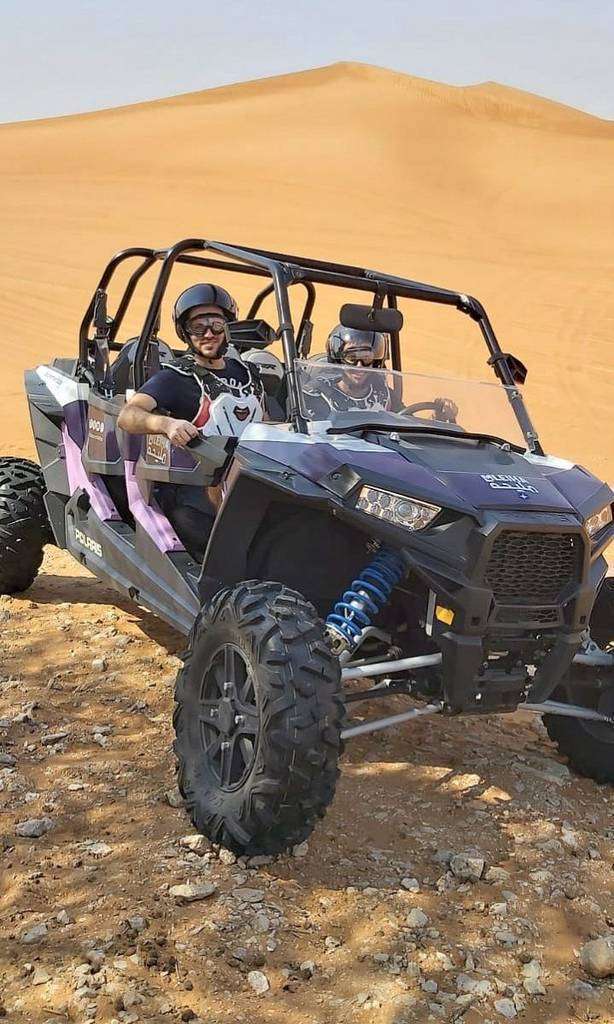
DESERT AND MILLENARY HISTORY
“Coming to the Arab Emirates also means discovering the desert. What I want from those who enjoy Passion Dubai Tours is that they do not just go on the typical excursions and safaris. My aim is to add value to these proposals as well, and to give them real and valuable content,” says Maria when she talks about this subject.
Therefore, when Maria talks about the desert, she does so with knowledge and awareness of where she should direct her steps and of those who accompany her. It is clear to Maria that this means going to the desert of the Emirate of Sharjah, located in the interior of the country to the north of Dubai. There, people will find impressive dunes to skid through with powerful four-wheel-drive vehicles, as well as sands to walk on and spectacular sunsets to watch. There is also the archaeological site of Maleha, a place where people can inhale a long history from the four cardinal points.
Right in the area of Al Madam, near Oman, sheltered by the Jebel Buhais and Jebel Fayah mountains, there is an excavation by Spanish archaeologists that has managed to unearth part of the history and way of life of an Iron Age settlement.
The area is presided over by the Maleha Archaeological Center, a modern museum that provides an unparalleled insight into early human activities in the region, dating back 130,000 years. The site offers a unique learning experience that takes visitors through the millennia to reveal the first traces of humanity.
“This is also part of the Arab Emirates that has to be discovered. A quick four-wheel-drive adventure in the dunes, or a dinner in the desert under the light of the stars are fine, very fine, but there are other options for diving in the sand and find the most remote past history of this people,” she says.
Maria goes even further. She invites those who are willing to do so to experience the desert that we all hold in our imaginations or have seen in the movies by providing visitors with the opportunity to immerse themselves in an adventure to the Tal Moreeb dune. Located in the Liwa desert at the south of Abu Dhabi, right on the border with Saudi Arabia, the dune is 300 meters high - one of the highest on the planet - 1,600 meters long and has a 50-degree drop.
Maria says that sometimes they stop on the way at farms, hundreds of kilometers away from the hustle and bustle, where people can witness the spectacle of a camel feeding its offspring. They even camp out at some special locations. The path to Tel Moreeb, now in the middle of the desert, runs for 30 kilometers along a small road that is paved and in good condition, going up and down dunes along the way. The experience is impressive.
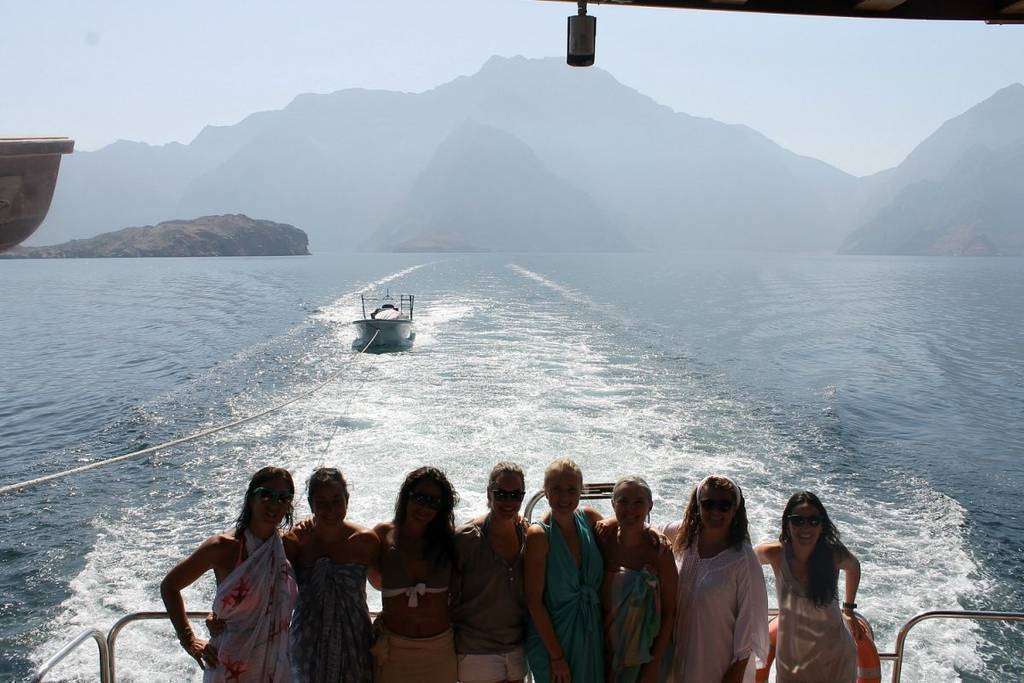
FIORDS IN THE ORMUZ STRAIT
Maria asks us: “Is there any place in the world that generates more interest than the Strait of Hormuz?” To which we have to answer “no”. Located between the Islamic Republic of Iran and the Sultanate of Oman, the site is a constant focus of international attention. As a gateway to the Arabian Gulf, dozens of oil tankers and merchant ships pass through its waters every day. On the Omani shore is the Musandam peninsula, which is located in the north of the Arab Emirates, a few hours’ drive from Dubai and very close to Ras Al Khaimah.
When crossing the border between the Arab Emirates and Oman, the desert gives way to a marine landscape, with bays and beaches surrounded by rocky inlets elevated above sea level. At each one, small traditional fishing ports emerge with boats at anchor after the days’ seafaring. The destination is one of these ports in the village of Khasab, far from the usual tourist routes. It is here that Maria and her companions wait to embark on a dhow, where, lying on the carpets that cover the deck, they sail through fjords that rise to the sky. Groups of dolphins can always be seen jumping alongside the boat. People can literally touch them with their hands.
The dhow anchors in crystal-clear waters. It’s time to dive in and swim among the hundreds of fish of all colors and sizes that dart through the transparent waters brimming with coral. And if anyone is willing to complete the adventure, there is the option to swim to Telegraph Island, a 160-meter long and up to 90-meter wide rock that floats between cliffs. The name ‘Telegraph’ comes from the telegraph cable repeater station built on the island in 1864.
“History, nature, culture, tradition, gastronomy and, above all, real adventure that helps you to comprehend a land and its people,” all of this is Maria’s passion.
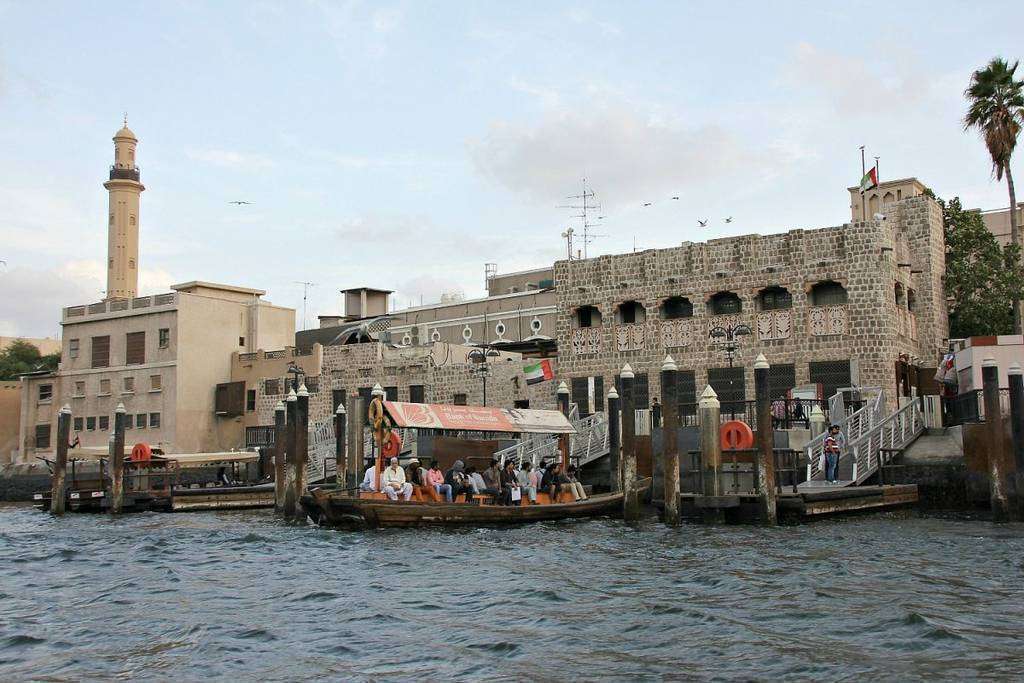
Quality and A-La-Carte Tourist Routes
Passion Dubai Tours, Maria Tello’s ‘tourist boutique’, has a growing team and is always looking for specialized tour guides and people who can offer visitors the quality seal of their own experience in the United Arab Emirates. This is the case of Maria Camacho, ‘Community Manager’ of Passion Dubai Tours and a veteran resident, who offers their clients her decade-long experience as a witness of the evolution and growth of Dubai.
Passion Dubai Tours offers tailor-made tours in the United Arab Emirates that can be designed for individuals or groups of 30 or more. María Tello, the driving force behind this very special initiative, is from Bilbao and has been living in Dubai since 2013. She has a degree in Law from the University of Deusto and a diploma in Tourism from the Catholic University of Avila. She also holds a Masters’ degree in Tourism Science from the School of Tourism Science in Rome. More importantly, she has a great knowledge of the Arab Emirates that comes from the many years she has lived in the country. She treasures every secret of this land.
She leads her tours in Spanish, Italian and English and everyone is welcome. In a very important year in which Dubai will host the Universal Exhibition 2020 and in which the city will receive millions of visitors, numerous delegations from countless countries in the Spanish-speaking world will come to the Arab Emirates and will have the opportunity to get to know a land that has much to show and discover. Especially, if they make the right choice.
“What I propose is that, in addition to Expo Dubai 2020, which is a must see, they choose to enter a country with an impressive history, culture, traditions and nature that are often unknown even to those who live here.”
----------------------
Este texto corresponde al Anuario 2020 de EL CORREO DEL GOLFO (descarga en PDF).




